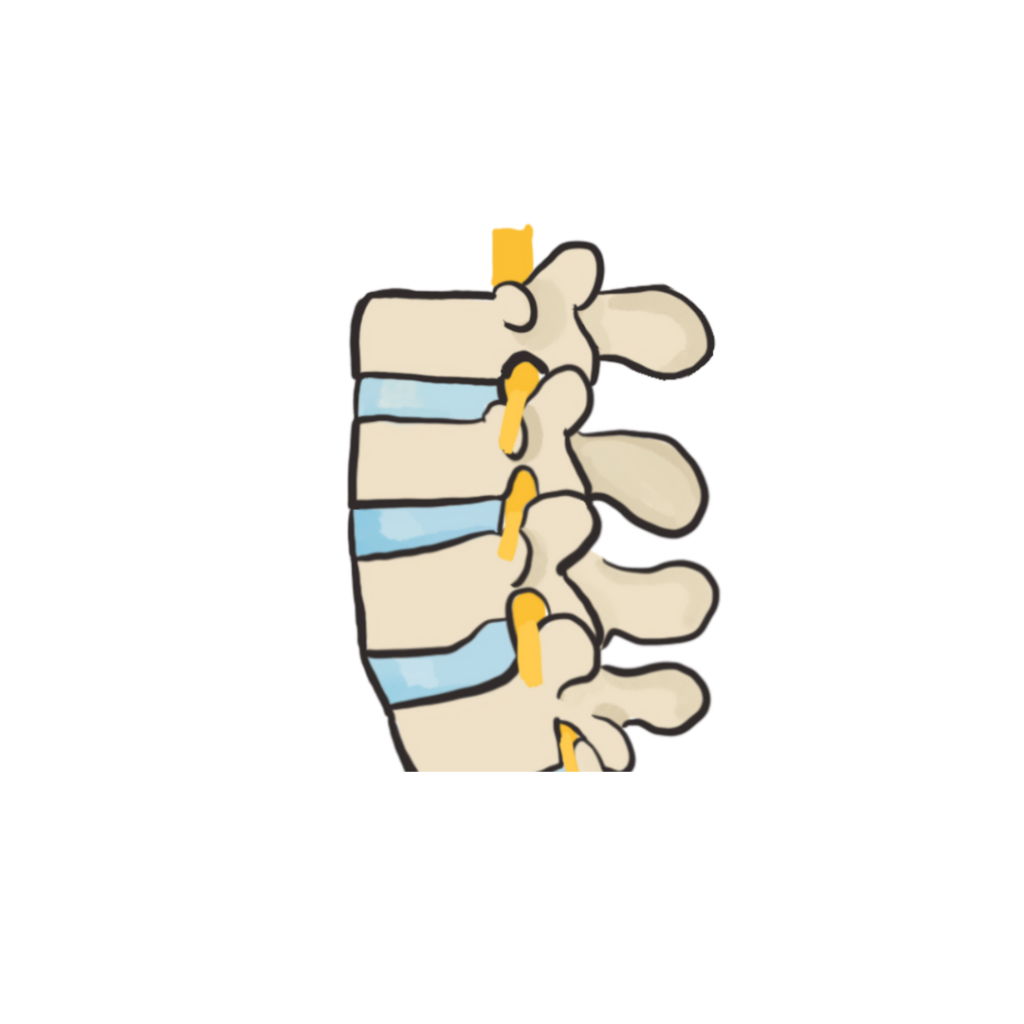Diller Law has had many clients come to us with injuries to their cervical spine. We know these injuries can be serious and that there is an array of treatments available for people who are suffering from these injuries. Our attorney Dr. John Naranja MD, JD, who is a past orthopedic surgeon, has professional experience handling cervical spine injuries and has written in detail about these injuries in his book, Medical Evidence.
Below Dr. John has answered some important questions to help educate our audience on the anatomy of the neck, the types of injuries that can occur, the symptoms that can result from these injuries and the treatments options for cervical spine injuries.
Could you explain the anatomy of the neck?
In the diagram above, you see a sagittal section of the cervical spine (side view without the soft tissues). The yellow at the top represents the spinal cord going down through the center of the vertebrae with its nerves exiting out to go to the rest of the body. The blue represents the discs.
What type of injuries can occur to the spinal cord?
The discs are often the area in the spinal column that are the weak links and where injuries often occur. A common injury that we see with our clients is something called whiplash, where the neck actually whips back and forth. When that happens, it can put a lot of pressure on the intervertebral discs (again, represented by the blue above). If the force is significant enough, those discs can be pushed out of place causing pressure to be placed on the nerves. This is also called a disc herniation. When the pressure is placed on the nerve, clients can start to develop radicular symptoms – which means they start to feel pain, numbness, or tingling down the arm. If severe enough damage is caused, the clients can experience weakness. It all depends on the area of the nerve that is experiencing the pressure.
What are treatments for these injuries?
For cases where there is a lesser amount of pressure on the nerve, people may treat these injuries non-surgically or non-operatively. Those types of treatments include anti-inflammatories, physical therapy or water therapy.
Another non-surgical option is nerve root injections. These injections can be used to decrease inflammation. Sometimes, these injections can cause the inflammation to go away for quite a while, but if the inflammation returns, this treatment only has a temporary effect.
If these symptoms become worse or intolerable, clients will be offered the option to undergo cervical fusion. Cervical fusion requires removing part of the disc and then putting a bony material in between where the disc was and then plates and screws to hold that together. Once that area is fused together, it will no longer move, but the goal is that it will no longer put pressure on the nerves.
Are Cervical Fusions always successful?
Clients would be unable to bend their neck as much as before the cervical fusion. Success depends on the amount of damage that has occurred at the nerve and corresponding spine.
Note that some people undergo cervical fusion that only operates on one disc level. Over time, it is possible they end up having to go back in and get another disc level fused with another surgery. This happens because if you fuse only one disc level, the adjacent parts of the spine start to experience more stress. Eventually what can happens is due to force, the next level left after the fusion starts to wear out – therefore resulting in the possible need for another fusion.
To find out even more information, watch Dr. John’s Cervical Fusion video.

